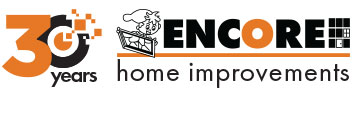Sustainability and being Green
- Details
- Written by Hammer
- Category: Other
- Hits: 2922
Is this the topic of the decade? Or at least it’s been the biggest topic of the last few years. We’re constantly being told the need to reduce our waste and reduce our carbon footprint. Some claim that things are dire and we have to step this up at a much quicker pace. Whatever your belief is about this (and this relates to global warming) it’s pretty undeniable that reducing carbon emissions and using less is a good idea.
If you’re in the window business then “things are changing”. Windows are the biggest source of heat loss in residential and commercial buildings. The current standard for windows is thermal with a low emissivity coating with an argon fill. This was quite the innovation back when it was developed, it has now become the standard in window efficiency. Low E coatings have continually improved to the point where there are different low e coatings for different climates, a low e coating for a window in Florida is different that a low e coating for a window in Toronto. Improvements in Low e coatings have raised the efficiency to the point where thermal glass with low e and argon can outperform triple glazed glass with no low e and argon. Presently the vast majority of windows that get replaced are thermal with a low e coating and argon gas. Despite all this advancement in window technology; windows still represent the biggest source of heat lost in a building. Consider that the new building code requires exterior walls to have an R31. Then when it comes to the windows the R value is 3.2 (this is a thermal window with low e /argon) to be fair windows provide some solar gains that provide natural heating and reduce loads on the building’s heating systems.
Where are things going?
Triple-glazed windows with 2 low e and 2 argon fills provide an R value of 8+ or a U- value of 1.25 or lower. The higher the R value the better. The lower the U value the better. There is other criteria such as SHGC (Solar heat Gain Coefficient) which is the amount of the sun’s rays that can penetrate the glass. SHGC is important as it relates to the amount of Heating degree Days we have compared to Cooling degree days. As the terms suggest the further North you live the more Heating degree days you’ll have. Yes, indeed this can get pretty complicated.
Consider the following facts: A good quality window with Low E and argon has an R value of 3.2 compared to thermal windows that are original to the house with an R value of about 1. A triple glaze 2 low e, 2 argon window has an R value of 9. This is more than double the efficiency of the good quality thermal window. It gets better: the cost to upgrade to the R9 window is about 20%. This is a one-time cost for windows that will provide double digit savings on your heating and cooling costs. This savings will last the life of the window. It’s a no brainer as an investment, it will improve your comfort, saving you money and it will reduce your carbon footprint.
Government Regulations
Are pushing for higher standards in efficiency, a few years ago the government made Low e /argon in windows a standard in new construction. It’s now proposed to go beyond this to the point that the window industry finds itself behind. The efficiency standard that is to be implemented is not yet available in the current windows industry. Despite the lament of the window industry this is a step in the right direction and North American windows should one day be as efficient as their European counterpart. We are staying tuned.
What about now?
When it comes time to replace your windows consider what is available. You’ll be presented with options and most will center around thermal glass with low E glass and argon gas, this will be explained as being much better than the current windows you have. Consider upgrading to triple glaze glass with 2 lowE coatings and 2 argon fills. This substantially increases the efficiency and will have a big impact on your heating and cooling costs. Is the cost worth it? ABSOLUTELY!

